Petersen Museum launches campaign to fund restoration of its 1948 Davis Divan
Posted on Jun 9, 2015 in Featured | 1 comment
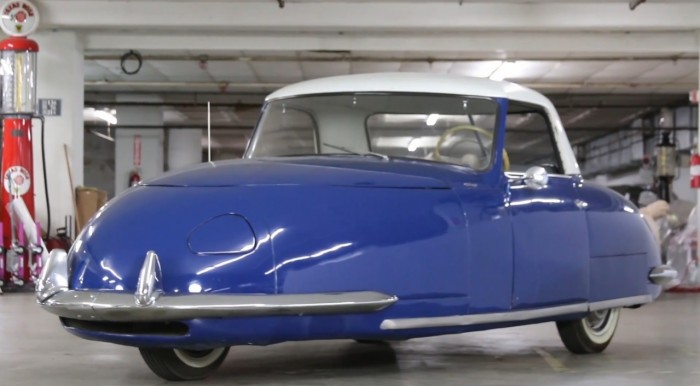
1948 Davis Divan, from the Petersen Museum’s collection.
The Davis Motorcar Company built just 17 examples of its three-wheeled cars before production ended in 1948, but the Van Nuys automaker is one of the few that originated in Southern California, making the company of particular interest to the Petersen Museum. The fourth Davis built, long owned by the Petersen, is in need of restoration, and a newly launched Indiegogo campaign hopes to raise the $30,000 needed to restore the car to original condition in time for the museum’s reopening in December.
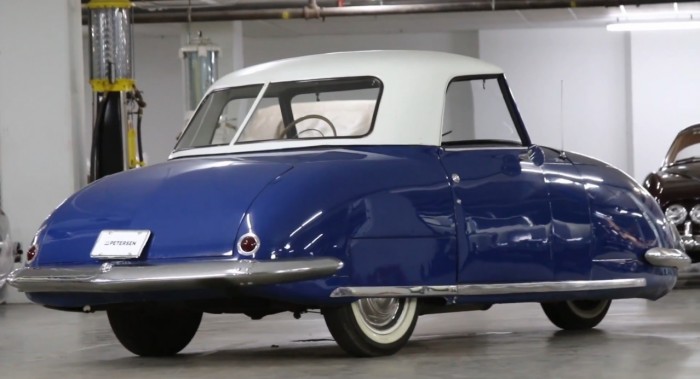
Glenn Gordon “Gary” Davis may have described himself as an industrial designer, but the Indiana native was a born pitchman. To call the Davis three-wheeler his own design is stretching the truth, and by more than a little bit. As Jim Donnelly wrote in the April 2005 issue of Hemmings Classic Car, the forerunner of the Davis Divan, then called the Kurtis Californian, was actually built by Frank Kurtis for Joel Thorne, a wealthy Californian with a passion for driving race cars.
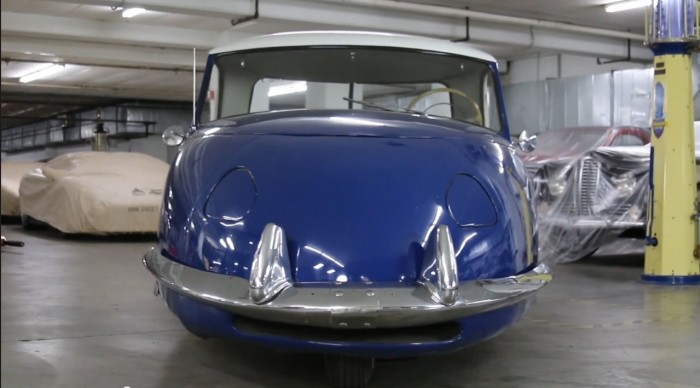
Though many details have been obscured by time, Thorne and Davis met in late 1945, and Davis immediately became obsessed with Thorne’s three-wheeled roadster. It soon fell under Davis’s ownership, though exactly how is a matter of some debate. What’s clear is that Davis wasted no time in promoting the car, now billed as a “Davis” instead of as a Kurtis, and charmed his way into coverage by major magazines (including Business Week and Life) and even a period newsreel. His pitch of a $1,000 automobile attracted investors and dealers alike, and in 1947 the Davis Motorcar Company opened its doors in a 57,000-square-foot factory formerly used to construct military aircraft. The company’s first prototype, dubbed “Baby,” soon followed. Next came the Delta prototype, with a removable hardtop, followed by the nearly production-ready Divan.
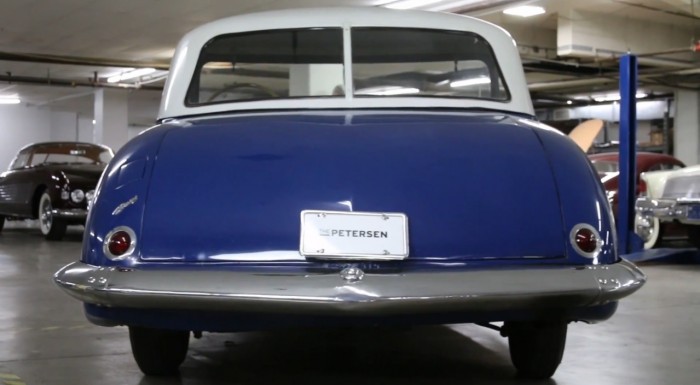
Like the other Davis models, the Divan featured a single wheel in front and two in back. Power came from a 63-horsepower, 162.4-cu.in. Continental L-head inline-four (or earlier, a 47-hp Hercules four), shifted through a Borg Warner three-speed manual transmission. Unlike the Baby, which utilized a tube steel space frame, the Divan used a more production-friendly channel steel frame, wrapped in 11 body panels pressed out of aluminum and zinc and either welded or bolted to the chassis. If its construction was innovative, so was its design: In addition to aerodynamic hidden headlamps, the Divan featured a bench seat meant for four adults, and hydraulic jacks at each wheel for easy servicing.
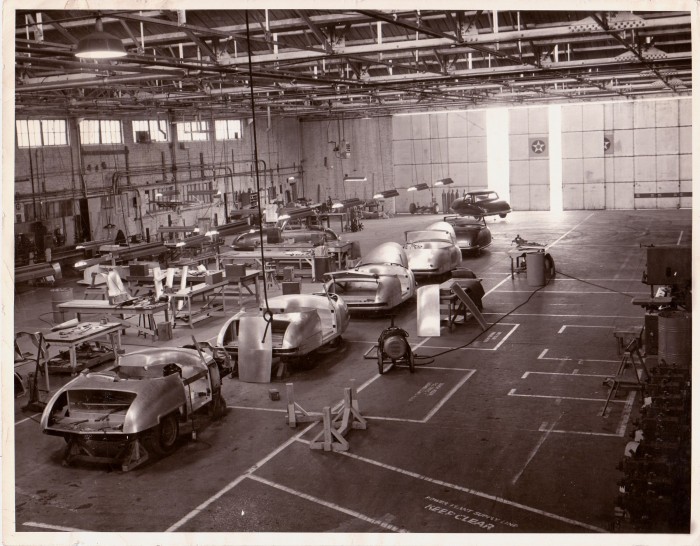
Davis automobiles under production in Van Nuys. Period photos courtesy Petersen Museum.
To pare back his startup costs, Davis reportedly offered his designers, engineers and employees a deal: work for free during the startup period, and wages would be doubled once sales began. By mid-1948, however, few employees had been paid, and the Los Angeles district attorney began looking into the company, and its proprietor, in early 1949. In May of 1949, workers filed suit against the company, which closed its doors shortly after. Davis’s troubles, however, were only just beginning: The company’s assets were seized and sold to satisfy tax liens, and Davis was indicted on 28 charges of fraud and grand theft for his misuse of investors’ money. Convicted in January 1951, he’d go on to serve two years in a county prison camp.
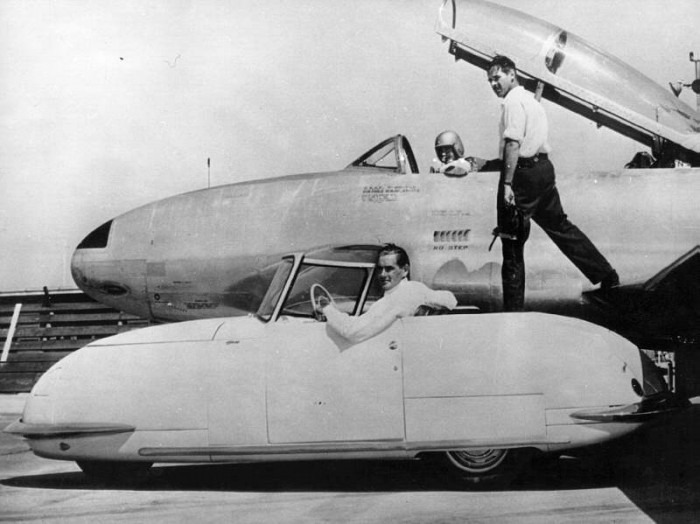
The Petersen has long had Davis Divan number four in its collection, but the California native is now showing its age. The car had been previously restored in an incorrect color scheme, using incorrect parts; the museum wants to raise the finds to properly restore it and paint it in the original livery. The goal of the Indiegogo campaign is to raise $30,000 to cover the cost of repair, which chief curator Leslie Kendall breaks down as $10,000 for paint, $5,000 for the interior, $7,500 for engine repairs and $7,500 for “other mechanical systems,” including the brakes, suspension and transmission. If the costs seem high, it’s important to remember that the Davis Divan wasn’t exactly a production car, and while some components were purchased off the shelf from suppliers like Spicer or Borg-Warner, much of the car was fabricated by hand.
The campaign has numerous levels of support. Spending $5 gets one an ebook of the Davis Divan’s restoration; $10 gets an “I built this car” sticker; $25 gets an “I built this car” shirt; $35 gets an “I built this car” combo pack, with sticker, shirt and ebook; $75 gets a tour of the car under restoration in the greater Los Angeles area (excluding travel); $150 gets a combo pack plus donor’s name on a plaque; $300 gets an invite to the unveiling party at the Petersen (excluding travel), plus a private tour with Leslie Kendall; $1,000 gets an invite to the reveal (excluding travel) plus a drive in the car and all perks below this level.
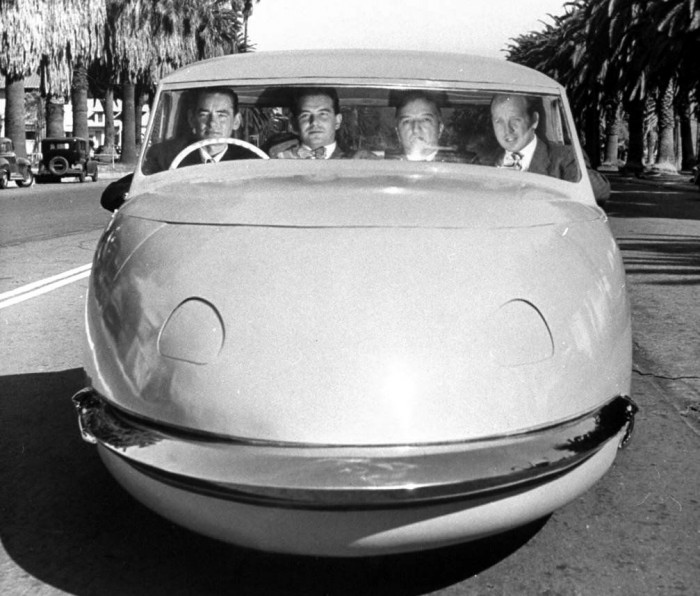





Considering all the orphan cars that have “been” this is one of the less interesting. Why bother? Better spent on research to fill out the history.